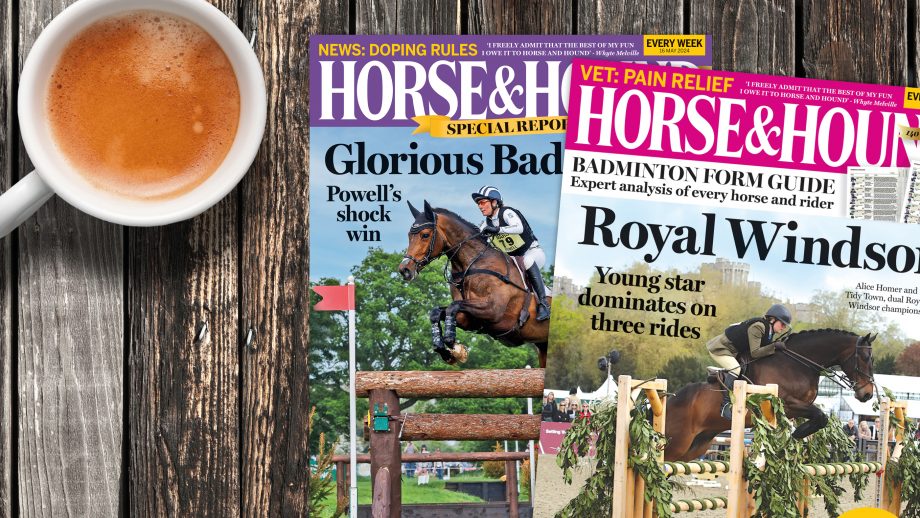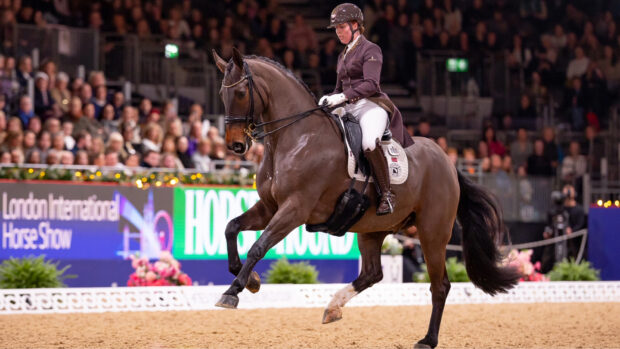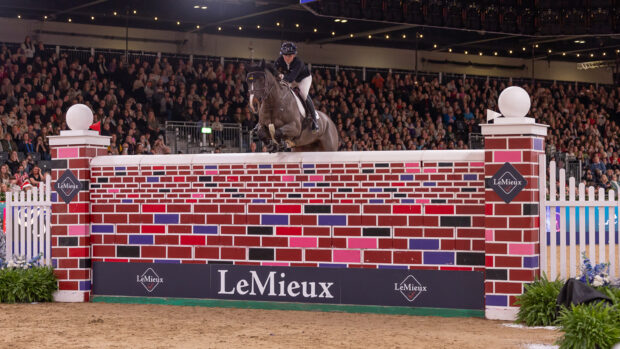Horse owners have been warned to be careful who they believe, after a controversial message was shared on social media regarding laminitis.
Vets, nutritionists and manufacturers are among those who have spoken out or contacted H&H after a barefoot advocate claimed that the painful and often fatal hoof condition is “not diet related – it is just a symptom of hoof imbalance”.
Laminitis is an inflammatory condition of the laminae, the tissue that attaches the pedal bone to the hoof wall. In extreme cases, the pedal bone can rotate so far as a result of the condition that it penetrates the sole, at which point euthanasia may be the only option. Although there can be other causes, excess weight can more than double a horse’s chance of developing it.
Independent nutritionists Clare MacLeod, Jennifer Little, Nicki Castle and Nikki Meggison were so concerned by the claim on social media, they made a joint statement to H&H.
“As qualified independent equine nutritionists, we wanted to share a warning about some potentially disastrous misinformation online stating that laminitis isn’t caused by diet,” they said. “Laminitis is a complex condition, which is not yet fully understood, but the role of diet is well established in research, clinical and practical experience. To claim otherwise is to ignore decades of scientific evidence and the daily experience of veterinary, nutrition and hoofcare professionals alike.”
Although, the nutritionists pointed out, quality regular hoofcare or farriery is vital in prevention of and recovery from laminitis, “it cannot completely protect horses from the effects of inappropriate feeding”.
“We urge owners to be cautious about online opinions, especially those that reject established science,” they said. “We encourage them to seek guidance from qualified professionals who base their advice and practice on evidence, not unproven ideology. We know that extreme views attract followers, but we also know a balanced approach is what helps our horses thrive.”
Be careful what you believe
Ms MacLeod told H&H her concern was for newer or less well informed horse owners, who may not know much about laminitis and could be swayed.
“Please don’t ignore the role of diet in laminitis, and please do be careful about who you believe on social media,” she said.
Ms MacLeod’s advice for horse owners shown or told novel information online is to check its credibility; if different experts all say the same thing, “it’s probably right”.
“All horses’ conditions can be complex and if something sounds appealing, be careful,” she said. “There’s never just one right answer, which is why these issues can be easy for people with extreme views to pick up. There are desperate owners who have tried everything to help their horses and something like this might seem light at the end of the tunnel but the fact something is so complex means anything that claims to be an easy fix should be an amber warning light, as no one has all the answers.”
British Equine Veterinary Association CEO David Mountford pointed out that no responsible horse owner would ask a stranger on Facebook to tell them how to treat their horse’s colic, and taking their advice on laminitis falls into the same category.
“Laminitis has been a concern for horse owners for centuries, so it’s inevitable it has generated much conversation,” he told H&H. “We now know that laminitis is linked to endocrine disease (insulin dysregulation) in most instances, although it may sometimes have an inflammatory/toxic or a mechanical cause instead. In these latter instances the cause is usually very evident.
“Although it might be tempting to seek opinions from ‘Dr Google’ or social media’s plethora of keyboard ‘experts’, your horse deserves prompt veterinary attention and evidence-based veterinary advice.
“If you want to dig deeper into the subject, look for scientific articles and ask yourself: ‘Who wrote this?’ (are they a qualified vet/scientist?); ‘Where was it published?’ (a scientific journal or a social feed?); ‘What evidence is it based on?’ (studies or anecdotes?); and ‘Is it recent?’ (scientific research and understanding constantly evolves).”
Vigilance urged
A few days after the post, the Royal Veterinary College (RVC) equine team also posted on social media to remind owners that they need to be vigilant at this time of year.
“The grass will continue to grow when the temperature is above 4°C, and on bright frosty mornings it will continue to make sugar but not use it up for growth, increasing the amount of sugar in each mouthful of grass,” the RVC said.
“Research has shown that 90% of cases of laminitis are associated with an underlying endocrine (hormone) disease, the two most common being equine metabolic syndrome (EMS) and pituitary pars intermedia dysfunction (PPID; also known as equine Cushing’s disease).
“In both of these diseases, it is high blood concentrations of the metabolic hormone insulin that seem to be responsible for causing the laminitis, and diet plays a big role in how much insulin there is in the blood at any given time, alongside the presence of EMS and PPID.
“It is important that animals with EMS or PPID are fed a diet low in sugar and starch and high in good-quality fibre to try and keep circulating insulin concentrations as low as possible.”
- To stay up to date with all the breaking news from major shows throughout 2025, subscribe to the Horse & Hound website
You may also be interested in:

‘Reluctance and ignorance can mean signing horses’ death warrants’: top vet busts laminitis myths
“Food restriction is not as cruel as laminitis. Being clipped out and not wearing a rug is not as cruel

Misinformation shared on social media is a real risk to horse health

Not just laminitis: vets warn of performance-related issues caused by excess equine weight

Laminitis: how to spot the signs, plus treatments and ways to prevent it

Subscribe to Horse & Hound magazine today – and enjoy unlimited website access all year round




